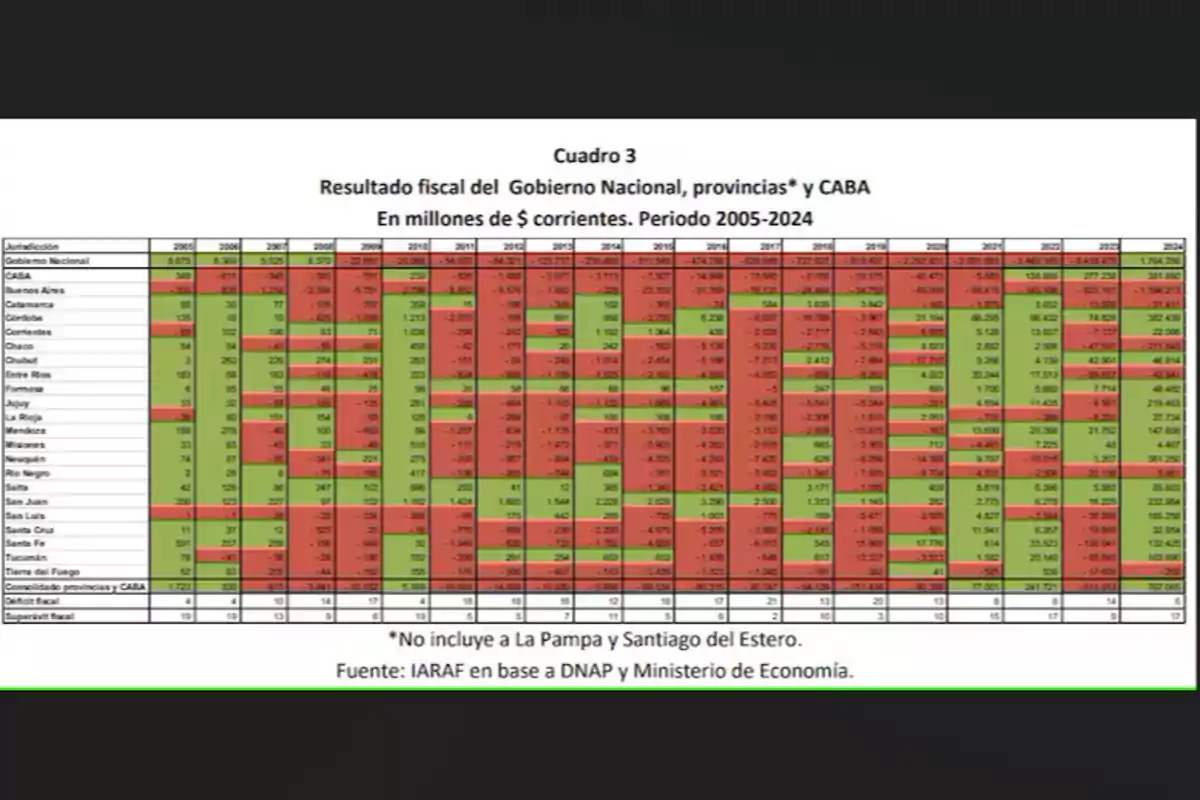
Historic: Argentina closed 2024 with a surplus at both the national and provincial levels
Javier Milei allowed the year to end with a fiscal surplus, thus cutting nearly 20 years of consecutive deficit
In a clear display of fiscal discipline, Argentina managed to close its public accounts with a financial surplus in 2024, something that hadn't happened since 2006. The data was confirmed by an analysis from the Argentine Institute of Fiscal Analysis (IARAF), which highlighted that both the National Government and the group of provinces and the Autonomous City of Buenos Aires (CABA) ended the year with positive figures.
This remarkable progress is due to one of the main objectives that Javier Milei's Government set since arriving at the Casa Rosada: eradicating the chronic deficit that characterized the Kirchnerist public administration in recent years. Throughout 2024, the Ministry of Economy announced month by month the achievement of fiscal and financial surplus, except in December, a month traditionally affected by spending seasonality.

According to the IARAF report, the consolidated financial surplus of the Nation and provinces reached $767,065 million. It is important to note that the data excludes the provinces of La Pampa and Santiago del Estero due to a lack of available information for the analyzed year.
"Until 2010, most jurisdictions presented a fiscal surplus, but between 2011 and 2017, the deficit predominated. Since then, the trend began to reverse, culminating in 2024 with the return of the surplus at the national level," the report emphasized. Meanwhile, the National Government had achieved a surplus in only four of the last twenty years, managing to reverse in 2024 a streak of fifteen consecutive years in the red.
At the provincial level, the performance was also widely positive. Only three districts failed to balance their accounts:
Buenos Aires, which recorded a primary deficit of $698,711 million.
Chaco, with a primary deficit of $144,481 million.
Catamarca, with a primary deficit of $29,149 million.
When considering the payment of debt interest, deficits were also observed in Entre Ríos, Río Negro, and Tierra del Fuego.

On the positive extreme, the standouts were:
Autonomous City of Buenos Aires, with a primary surplus of $513,398 million.
Córdoba, with a positive balance of $507,211 million.
Neuquén, with a surplus of $450,596 million.
Regarding the provincial consolidated along with CABA, IARAF recalled that between 2005 and 2020, fiscal deficits predominated, with deficits recorded in 13 of those 16 years. However, starting in 2021, improvements began to be observed, finally consolidating last year under the current management.
As for the National State, the results were resounding:
A primary surplus of $10,405,810 million was obtained, equivalent to 1.8% of the Gross Domestic Product (GDP).
After the payment of debt interest, the financial surplus stood at $1,764,786 million, representing 0.3% of the GDP.
More posts: